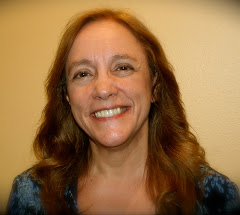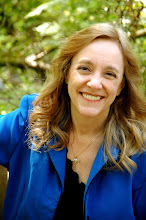The first chapter of a novel needs to “hook” the reader, riveting his or her eyes to the page and creating an intense desire to read on and learn more about the characters and what happens to them. This is not an easy task, but it’s absolutely essential.
The best way to start a story is to show the main character of the book, with an immediate problem, doing something interesting. Involve the reader quickly with this character, arouse curiosity, and give the casual browser who picks up your book the feeling that he or she must know more about what this character is doing and why. Long expositions and descriptions will not grip a busy reader.
In your first few paragraphs, answer the usual questions—Who? What? Where? When? How? Why? Who’s the main character and who else is in the scene? What are they doing? Where are they? When is this scene taking place: the era (unless it’s contemporary), season (if that’s important for readers to know), time of day? How are they coping with the immediate problem? Why can’t this problem be easily solved?
The first chapter should show the “inciting incident”—what happens that changes the character’s normal world and previous life direction. What new goals arise as a result of this incident, and what obstacles stand in the way of accomplishing those goals?
Don’t spend too much time inside a character’s head, alone with his/her thoughts. Include one or two of the major secondary characters in the opening scene to provide interaction. This will enable your reader to come to know your main characters and relate to them right away. Don’t introduce too many characters in the first chapter or your reader will have a hard time keeping everyone straight and remembering who they all are.
Don’t have your characters just stand around talking. Give them something interesting to do. And watch out for “author exposition”—you, the author, telling readers what you think they need to know through character dialogue that’s not realistic or natural.
Weave in pertinent information in bits and pieces that relate to the action. Avoid giving big chunks of backstory or description that aren’t directly connected to what’s happening.
The first few chapters should establish who the main characters are, what events of major significance happened to them before the story started, what is happening to them now, what the main problem in the story is, who (and/or what) is—or will likely be—in opposition to the goals of your main characters, why those goals are important to them, and what they are going to be forced to do to accomplish their goals. Set the “hook” you established in the opening scene, and reel in readers with bait they can’t resist.
Friday, February 26, 2010
Friday, February 19, 2010
Kathy Ide's Editing Tip #2
AS vs. WHEN
As (when used as a conjunction, as in “As this happened, that happened”) implies that the second thing occurred while (within the same time frame as, during the time in which) the first thing was in the process of happening.
When implies that the second thing happened at the same moment in time that the first thing happened (a specific time being the essential element).
Example:
"As the garage door came down (while it was in the process of coming down), the cat scurried under it."
vs.
"When the garage door came down (at the moment it touched the concrete), it hit the cat."
As (when used as a conjunction, as in “As this happened, that happened”) implies that the second thing occurred while (within the same time frame as, during the time in which) the first thing was in the process of happening.
When implies that the second thing happened at the same moment in time that the first thing happened (a specific time being the essential element).
Example:
"As the garage door came down (while it was in the process of coming down), the cat scurried under it."
vs.
"When the garage door came down (at the moment it touched the concrete), it hit the cat."
Friday, February 12, 2010
Active vs. Passive Verbs
Starting this week, instead of PUGS Pointers, I'm going to post some self-editing tips. Here's the first one, on Active vs. Passive Verbs.
Wherever possible, strive to use strong, precise verbs rather than weak, vague verbs. Instead of saying, “They were going,” write, “They went.” Or better yet, show how they went. “They jogged,” “They raced,” “They ambled,” for example. The more description you can fit into a single action verb, the better.
Here are some examples:
Passive: It is believed by Sue that a curfew must be placed on her son, Matthew.
Active: Sue believes that she must place a curfew on her son, Matthew.
Passive: It was earlier demonstrated that Matthew could be intimidated by too much freedom.
Active: Friday’s party showed Sue that too much freedom could intimidate Matthew.
Passive verbs often indicate that a subject exists, or that something happens to the subject. Active verbs describe something a subject does.
Passive: Andrew had dark, curly hair and a bushy beard.
Active: Andrew ran his fingers through his dark, curly hair and stroked his bushy beard.
Passive: Two cups of coffee were on the table.
Active: Joe picked up two cups of coffee from the table.
NOTE: Verb phrases that include is, was, are, were, be, been, would, could, has, had, have, etc. are usually passive.
In nonfiction, there are a few acceptable reasons to use passive verbs:
1. To emphasize the action rather than the subject.
Example: Jim’s bioengineering proposal was approved by the committee.
2. To keep the subject and focus consistent throughout a passage.
Example: The astrobiology department presented a controversial proposal to the committee. After long debate, the proposal was endorsed by ...
3. To be tactful by not naming the subject.
Example: The e-mail message was misinterpreted.
4. To describe a condition in which the subject is unknown or irrelevant to the sentence.
Example: Every year, many people are diagnosed with Environmental Illness.
5. To create an authoritative tone.
Example: Visitors are not allowed after 9:00 p.m.
In all other instances, and in all fiction writing, use active verbs in place of passive ones wherever feasible.
Wherever possible, strive to use strong, precise verbs rather than weak, vague verbs. Instead of saying, “They were going,” write, “They went.” Or better yet, show how they went. “They jogged,” “They raced,” “They ambled,” for example. The more description you can fit into a single action verb, the better.
Here are some examples:
Passive: It is believed by Sue that a curfew must be placed on her son, Matthew.
Active: Sue believes that she must place a curfew on her son, Matthew.
Passive: It was earlier demonstrated that Matthew could be intimidated by too much freedom.
Active: Friday’s party showed Sue that too much freedom could intimidate Matthew.
Passive verbs often indicate that a subject exists, or that something happens to the subject. Active verbs describe something a subject does.
Passive: Andrew had dark, curly hair and a bushy beard.
Active: Andrew ran his fingers through his dark, curly hair and stroked his bushy beard.
Passive: Two cups of coffee were on the table.
Active: Joe picked up two cups of coffee from the table.
NOTE: Verb phrases that include is, was, are, were, be, been, would, could, has, had, have, etc. are usually passive.
In nonfiction, there are a few acceptable reasons to use passive verbs:
1. To emphasize the action rather than the subject.
Example: Jim’s bioengineering proposal was approved by the committee.
2. To keep the subject and focus consistent throughout a passage.
Example: The astrobiology department presented a controversial proposal to the committee. After long debate, the proposal was endorsed by ...
3. To be tactful by not naming the subject.
Example: The e-mail message was misinterpreted.
4. To describe a condition in which the subject is unknown or irrelevant to the sentence.
Example: Every year, many people are diagnosed with Environmental Illness.
5. To create an authoritative tone.
Example: Visitors are not allowed after 9:00 p.m.
In all other instances, and in all fiction writing, use active verbs in place of passive ones wherever feasible.
Friday, February 5, 2010
This week's PUGS Pointer: Single quotation marks are used to indicate quotes within quotes. There is no other use for a single quotation mark. (CMOS 11.33) Example:
“And He said to them, ‘Follow Me, and I will make you fishers of men’” (Matthew 4:19 NASB).
In typesetting, the publisher will insert a “hair space” between a single quotation mark and a double quotation mark.
NOTE: If you’re using “curly quotes,” make sure the single quotation marks are curled in the right direction.
“And He said to them, ‘Follow Me, and I will make you fishers of men’” (Matthew 4:19 NASB).
In typesetting, the publisher will insert a “hair space” between a single quotation mark and a double quotation mark.
NOTE: If you’re using “curly quotes,” make sure the single quotation marks are curled in the right direction.
Subscribe to:
Posts (Atom)

